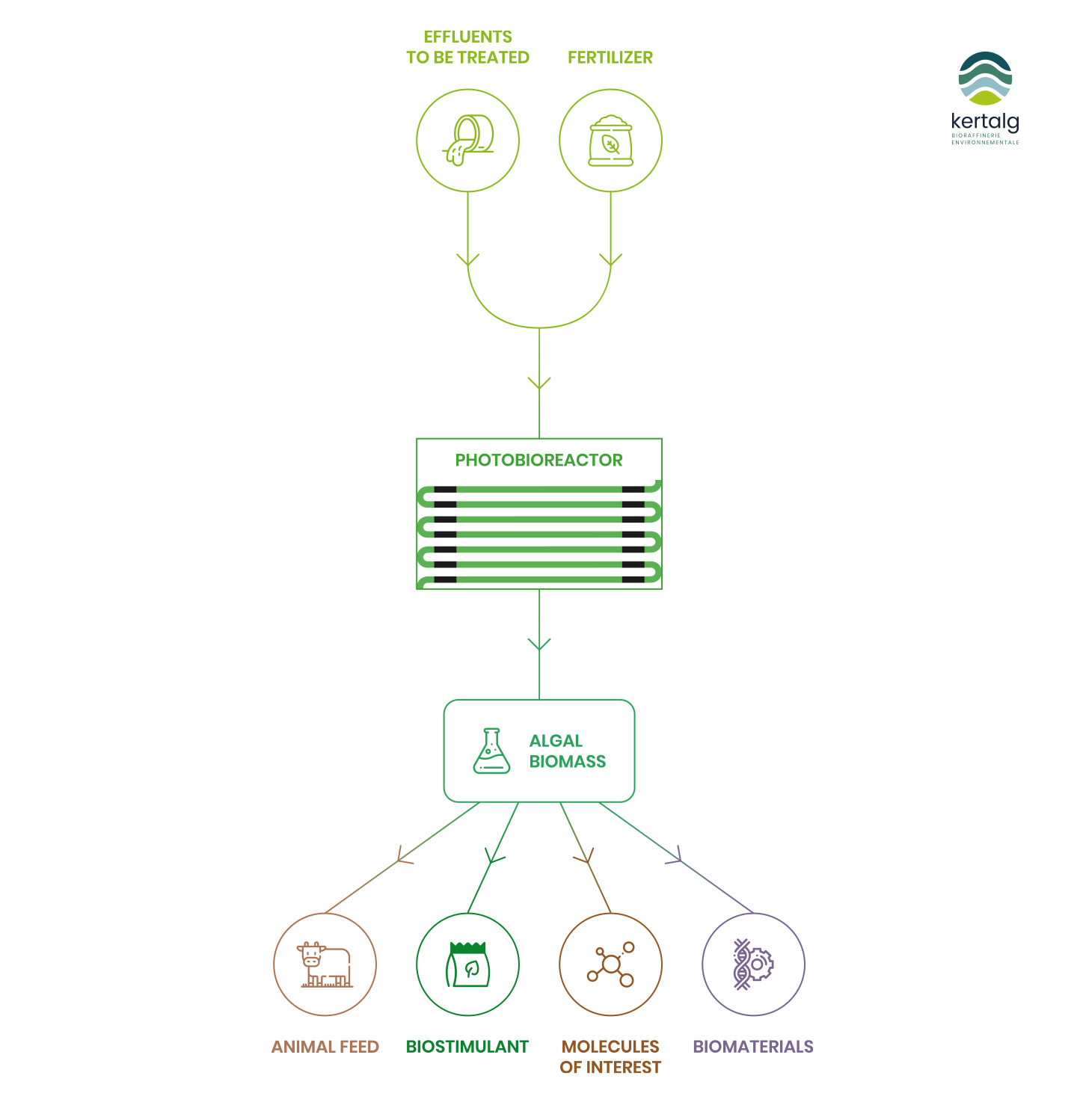Principle
Microalgae are photosynthetic organisms that use light as an energy source, CO2 as a carbon source, and the nutrients they find in the digestate as a growing medium. They will therefore fix atmospheric carbon and so-called "pollutants" in order to create valuable organic matter.
01. Recover
The liquid digestate and CO2 (the ultimate residues of methanisation) are directed to a photobioreactor, installed outdoors, in which the microalgae will be able to grow using these resources. The photobioreactors are inoculated with several species of microalgae, chosen according to the desired use, in order to create an ecosystem.
02. Cultivate
In order to optimize the growth of algae and therefore the purification of the digestate, all "vital" parameters are controlled: management of CO2 and pH, temperature, dissolved oxygen, etc...
03. Separate
The microalgae are then separated from the culture medium by centrifugation.
The result is a concentrated paste on one side and clean water on the other.
04. Enhance
Depending on the chosen recovery process, the algae can be dried or left as a paste. Although we prefer a biostimulant recovery, this is not the only possible use. Indeed, the molecules of interest contained in the algae (antioxidants, pigments...) can be extracted and used by the pharmaceutical or cosmetic industry. They can also be used for animal feed or be used in biomaterials (bricks).

